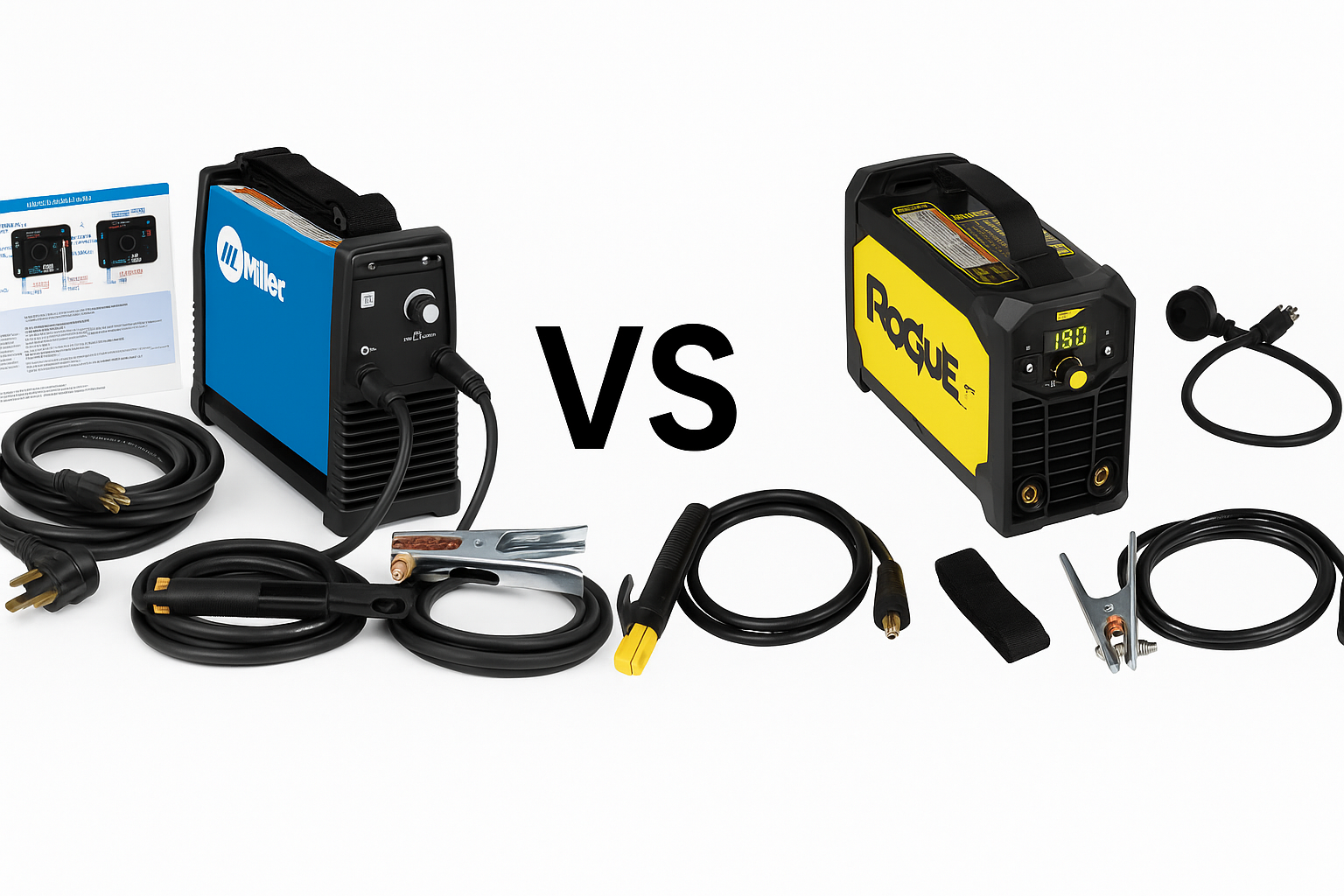Introduction & Overview
When it comes to stick welding, the Stick Welder Showdown: Miller Maxstar 161 S vs ESAB Rogue ES 151iP PRO sets the stage for a head-to-head battle between two of the most popular welding machines on the market. Both welders are known for their reliability and performance, making them crucial tools for both amateur and professional welders. Understanding their key differences can help buyers make informed decisions and ensure they select the right welder for their needs.
Key Features
The Miller Maxstar 161 S is known for its portability and efficient power usage, often highlighted by its Auto-Line power management technology. This makes it ideal for use in different environments with fluctuating voltages. On the other hand, the ESAB Rogue ES 151iP PRO stands out with its built-in PFC (Power Factor Control) circuit, which optimizes energy efficiency and reduces power consumption. Both machines capitalized on lightweight and easily transportable designs, but the Rogue offers additional protection with its sturdy, weather-resistant casing.
Pros & Cons
-
Pros:
- Miller Maxstar 161 S: Auto-Line technology for voltage adaptability, lightweight design, reliable arc performance.
- ESAB Rogue ES 151iP PRO: Robust build, PFC for energy efficiency, portable with weather protection.
-
Cons:
- Miller Maxstar 161 S: Higher price point, fewer advanced features.
- ESAB Rogue ES 151iP PRO: Slightly heavier, fewer output settings.
Who It’s For
The Stick Welder Showdown: Miller Maxstar 161 S vs ESAB Rogue ES 151iP PRO caters to users requiring robust, portable solutions. The Miller Maxstar 161 S is perfect for tradespeople who frequently encounter variable power sources, whereas the ESAB Rogue ES 151iP PRO suits those needing a durable device for outdoor or rugged environments. Both are excellent for home DIYers, maintenance workers, and professional welders focusing on efficiency and reliability.
What Makes It Unique
What sets these welders apart is their unique incorporation of energy efficiency technologies. The Miller Maxstar 161 S utilizes Auto-Line technology for seamless power adaptability, while the ESAB Rogue ES 151iP PRO offers a PFC circuit, reducing the risk of tripping breakers. Both machines excel in portability but with different strengths, ensuring users have options tailored to specific working conditions and power requirements.
Buying Tips
When choosing between the Stick Welder Showdown: Miller Maxstar 161 S vs ESAB Rogue ES 151iP PRO, consider the environments you will primarily work in. If you frequently move between job sites with uncertain power stability, the Miller Maxstar’s adaptability is invaluable. However, for consistent operations in more demanding environments, the ESAB Rogue’s robust construction is ideal. Consider investing in quality protective gear and compatible accessories like foot pedals or electrodes to maximize your machine’s performance.
Price Comparison: Miller Maxstar 161 S vs ESAB Rogue ES 151iP PRO
When it comes to price, the ESAB Rogue ES 151iP PRO comes in at a noticeably lower cost compared to the Miller Maxstar 161 S. On average:
-
ESAB Rogue ES 151iP PRO retails between $500–$650, depending on the kit and seller.
-
Miller Maxstar 161 S typically lands in the $950–$1,100 range.
That’s a price difference of $400–$500, which is substantial if you’re on a budget or just need a solid stick welder for light-to-medium duty work.
The Rogue offers impressive arc performance, dual voltage input, and a rugged case — all at a budget-friendly price. On the other hand, the Maxstar 161 S justifies its premium with exceptional build quality, smoother arc characteristics, and a trusted name for jobsite reliability.
If cost is your top concern, ESAB wins on value. But if you’re investing in long-term durability and top-tier arc control, the Miller might be worth the upgrade.
Conclusion
In the Stick Welder Showdown: Miller Maxstar 161 S vs ESAB Rogue ES 151iP PRO, both models exemplify how cutting-edge technology enhances welding efficiency and portability. Whether you prioritize adaptability or durability, these welders offer compelling advantages. By evaluating specific needs and work environments, users can confidently choose the ideal device for their welding endeavors.
We may earn a small commission through Amazon affiliate links, at no extra cost to you.
Last update on 2025-12-05 / Affiliate links / Images from Amazon Product Advertising API
- Dual voltage input power – flexibility to use on either 120V or 230V outlets
- Pulse SMAW functionality – improves heat input control, minimizes distortion of thin materials and helps reduce spatter for higher quality welds
- Superior Arc characteristics – smooth and stable performance (including special mode for stick 6010
- Generator Compliant – suitable for use with generators. (7kW recommended)
- Easy to Use – and adjust a wide range of arc parameters for more control over your weld
Last update on 2025-12-05 / Affiliate links / Images from Amazon Product Advertising API




Leave a Reply